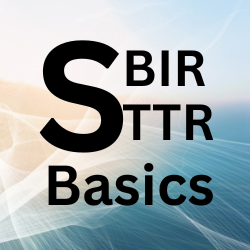DoD Issues Updates to Data Rights Regulations for SBIR/STTR Programs
- Overview: The Department of Defense (DoD) updated its data rights regulations and contract clauses for Small Business Innovation Research (SBIR) and Small Business Technology Transfer (STTR) programs, effective January 17, 2025.
- Key Change: Incorporates the Small Business Administration’s (SBA) 2019 policy shift, setting a fixed 20-year protection period for SBIR/STTR data rights from the contract award date, replacing the prior indefinite “daisy-chaining” approach.
- Background: DoD has applied this change via a class deviation since 2019, now formalized in the DoD Federal Acquisition Regulation Supplement (DFARS).
- Impact: Clarifies key issues and provides an opportunity to revisit SBIR/STTR data rights questions.
1. Understanding SBIR and STTR Programs
- Purpose: Promote federal funding for small businesses in early-stage research and development.
- Phases:
- Phase I: Concept development, smaller contracts.
- Phase II: Prototype development, up to $2 million or more.
- Phase III: Production and commercial application, no dollar limit, funded by non-SBIR/STTR sources.
- Eligibility: Phase I and II limited to small businesses (<500 employees, 50% U.S.-owned/controlled); Phase III open to prior Phase I/II awardees or successors-in-interest.
- Sole-Source Authority: Phase III contracts can be awarded without competition if derived from, extend, or complete prior SBIR/STTR efforts, as applicable to any agency or prime contractor.
2. SBIR/STTR Data Rights Explained
- Benefit: Contractors restrict the Government from sharing proprietary SBIR/STTR data outside the Government during the protection period.
- Scope: Applies to technical data and computer software developed or generated under SBIR/STTR contracts.
- Protection Period:
- Pre-2019: Extended indefinitely via “daisy-chaining” for up to 4 years (civilian agencies) or 5 years (DoD) after final deliverable.
- Post-2019: Fixed 20 years from contract award, then shifts to government purpose rights.
- Rights Progression:
- During protection: Equivalent to “limited rights” (technical data) and “restricted rights” (software), internal Government use only.
- Post-protection: Government-purpose rights allow non-commercial third-party use; unlimited rights permit any use, including commercial use.
- Competitive Risk: Post-protection, data sharing can be allowed for re-procurement, which challenges the sole-source status; however, statutory sole-source authority for Phase III remains intact.
3. Asserting SBIR/STTR Data Rights
- Steps:
- Timely assert restrictions in proposals and ensure their incorporation into contracts.
- Mark data with FAR or DFARS legends before delivery.
- Maintain records that prove development occurred at private expense or under SBIR/STTR contracts.
- DoD Update: DFARS 252.227-7017 now requires contractors to identify SBIR/STTR data that will be generated and delivered with rights, removing the prior exemption.
- Caution: DFARS 252.227-7018 inconsistently omits this requirement; contractors should still assert rights in proposals and contracts.
- Marking: It is critical to use prescribed legends; unmarked data risks an assumption of unlimited rights by the DoD.
- Corrections: If the contractor did not externally distribute data, then inadvertent omissions are fixable within 6 months (or with extension), provided the Government receives clearance of prior use liability.
4. Which SBIR/STTR Protection Period Applies?
- Determination: Governed by the contract clause under which data are developed or generated.
- SBA Stance: The 2019 rule change has no retroactive effect on existing contracts.
- DoD Guidance (PGI 227.7104-2):
- Data first generated under the old daisy-chaining rule retains indefinite protection if redelivered later.
- Data under the 20-year rule redelivered under the same rule expires 20 years from the date of the first contract.
- Modified data: Original portions follow the prior contract’s period; new portions follow the current contract’s period.
- Ambiguity: “Developed” (constructed/tested) vs. “generated” (created/fixed) terms create confusion; rights apply to data developed or generated under SBIR/STTR contracts.
- Interpretation: The protection period ties to either a development or generation contract, potentially renewing 20-year periods for new data.
5. Do SBIR/STTR Data Rights Apply to Phase III?
- Confirmation: Yes, per SBA’s SBIR Policy Directive and DFARS 227.7104-1(d).
- Subcontracts: The DoD clarifies that DFARS 252.227-7018 and other clauses should flow down to Phase III subcontractors through prime contracts.
6. Can the Government Demand Relinquishment of Rights?
- Policy: No, DoD prohibits requiring contractors to forgo SBIR/STTR data rights as a condition of award.
- Negotiation: Special license rights deviating from SBIR/STTR rights can only be negotiated post-award to ensure fair competition.


